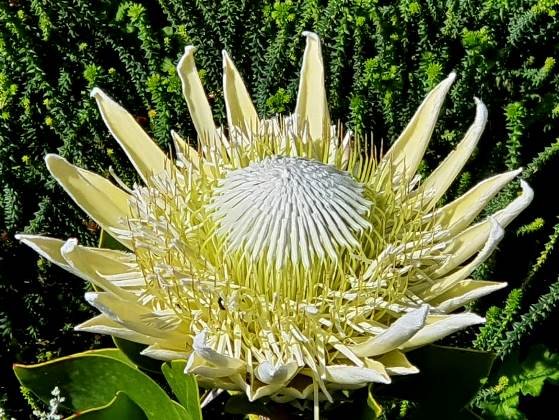Protea cynaroides flowering creamy white

Author: Ivan Lätti
Photographer: Uri Mitrani
The less often seen creamy white flowering form of Protea cynaroides still surprises and causes excitement. This head with more than half of its florets already open is still soft on the eye and a food source to birds and insects. Some shades may lean towards greenish cream. This colour flowerhead has been mainly observed in the Kogelberg and possibly near Caledon.
As the ring of curved styles around the central cone in the flowerhead break free from their perianths one by one, they straighten and join the horde of erect, pointed pollen presenters on their outside. These are all ready to be touched by pollinating visitors, while the compact, rondavel-like formation of closed florets in the centre gradually shrinks.
Honeybees and many kinds of beetles, as well as sunbirds and Cape sugarbirds enjoy what is edible here. Simultaneously they contribute to the continued existence of the king protea, by carrying acquired pollen to florets elsewhere (Manning, 2007; Bean and Johns, 2005; Rebelo, 1995; Rourke, 1980; iNaturalist).

